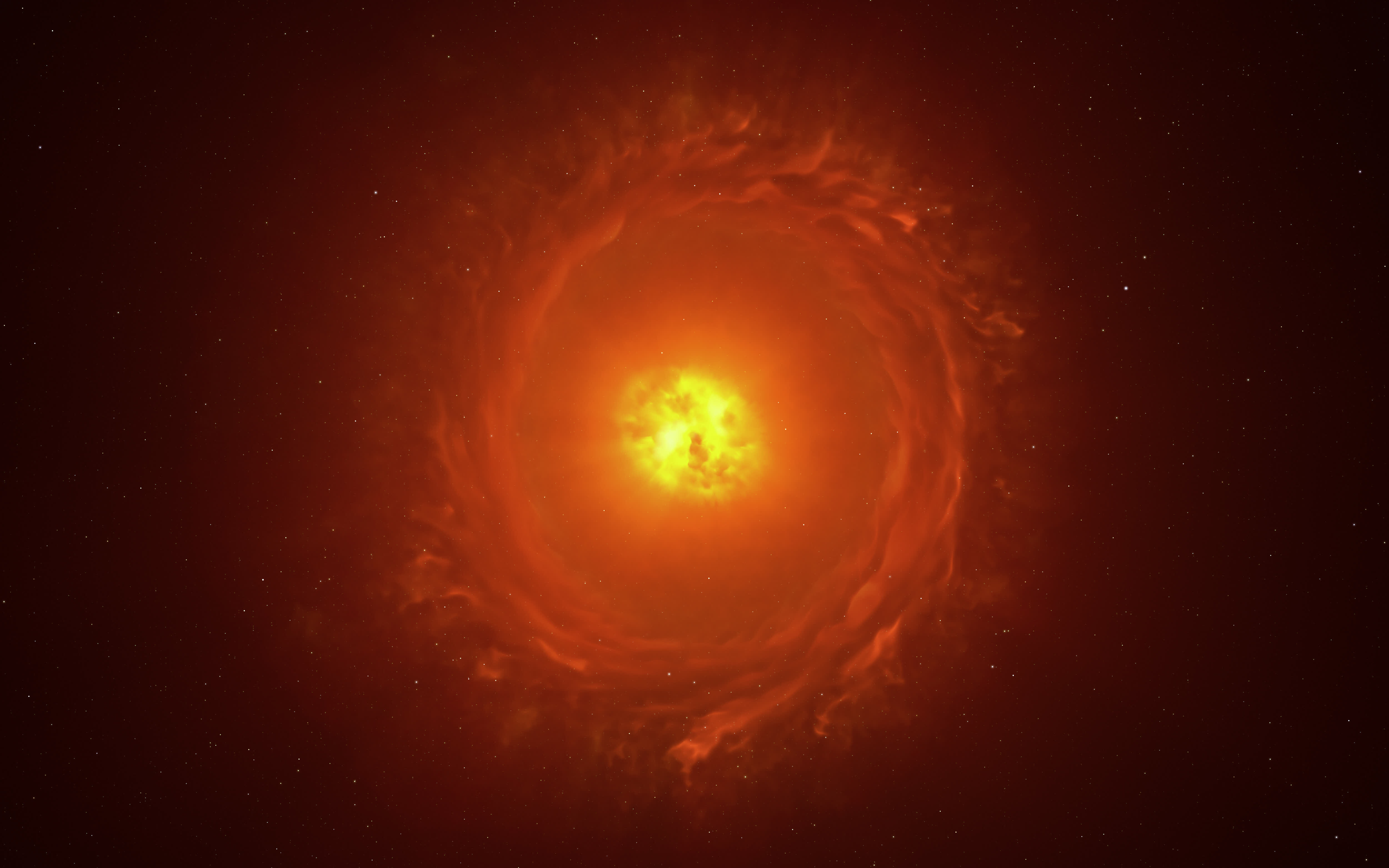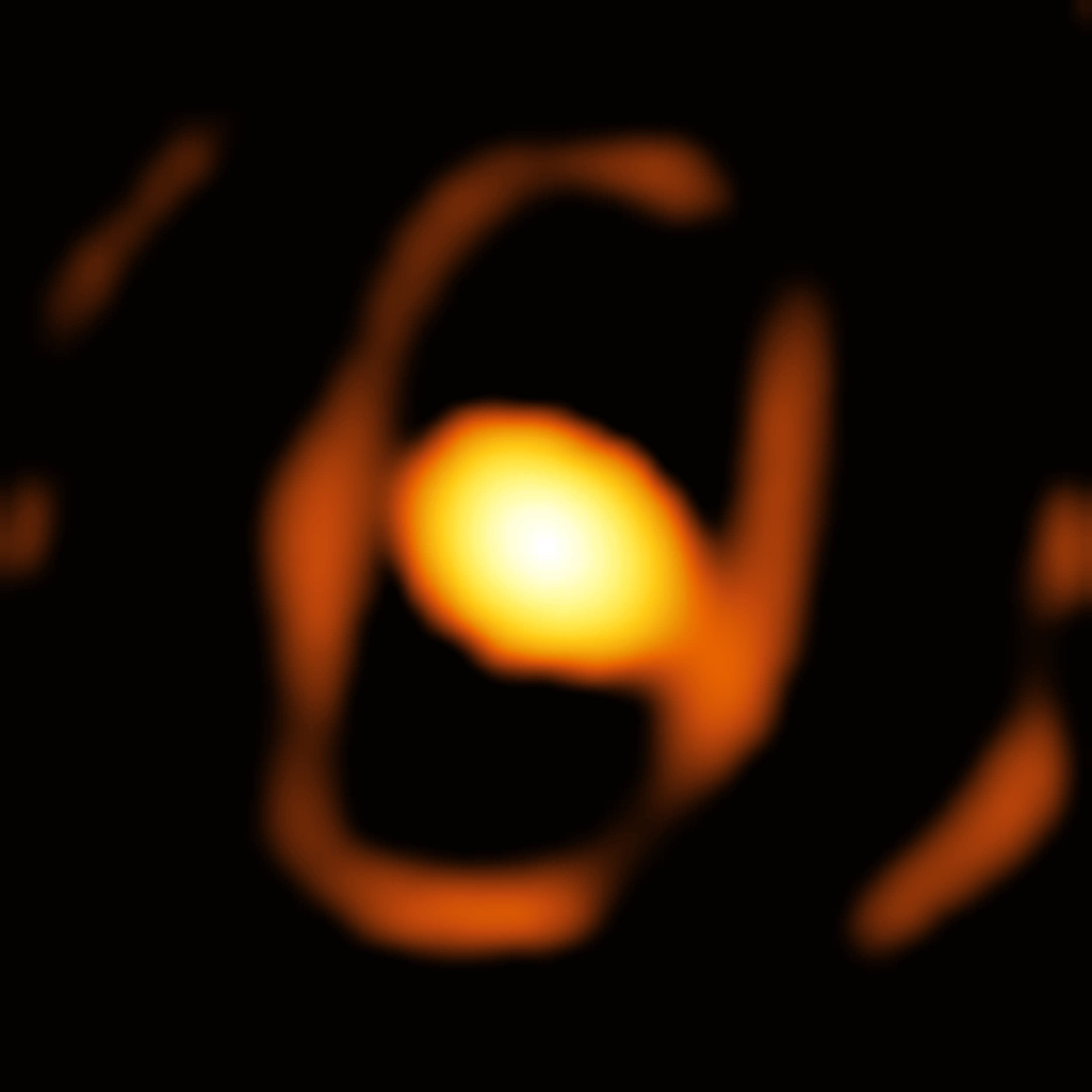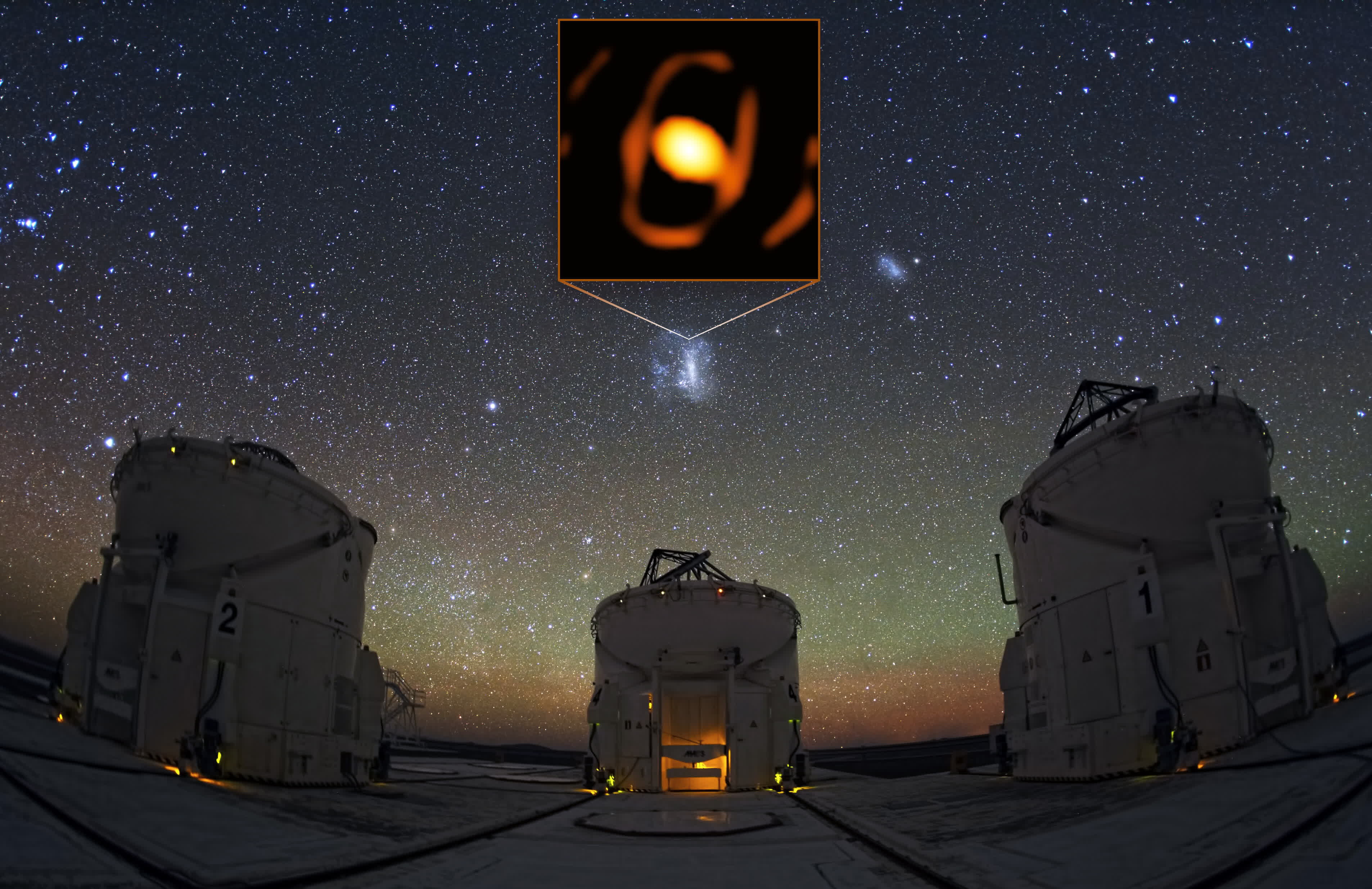What just happened? For the first time, scientists have captured a detailed close-up image of a red supergiant star nearing the end of its life outside the Milky Way galaxy. The star, known as WOH G64, is located 160,000 light-years away in the Large Magellanic Cloud, a dwarf galaxy that orbits the Milky Way.
The zoomed-in view was made possible by the European Southern Observatory's powerful Very Large Telescope Interferometer (VLTI), located in Chile's Atacama Desert. Researchers noted that this was the first time they successfully captured a direct image of a dying star in another galaxy at such close range.
The observations revealed the red supergiant expelling gas and dust as it approaches the final stages before going supernova, one of the last evolutionary phases of a massive star. Ohnaka's team found the star encased in an egg-shaped cocoon of ejected material, indicating that a "drastic ejection" may occur imminently ahead of the explosive finale.

Astronomers have captured detailed images of around two dozen stars within our galaxy, but achieving similarly close glimpses of stars in other galaxies has been a significant challenge due to the immense distances involved – until now. WOH G64, a red supergiant approximately 2,000 times the size of our Sun, has long fascinated researchers.
The team first studied WOH G64 using the VLTI in 2005 and 2007, but capturing a detailed image had to wait for the development of the interferometer's second-generation GRAVITY instrument. When they finally obtained the new image, the researchers were surprised to discover that the star had dimmed significantly over the past decade.
"We've found the star has undergone a major change in just 10 years, giving us a rare chance to watch a star's life cycle in real-time," said Gerd Weigelt from Germany's Max Planck Institute, a co-author on the study published in Astronomy & Astrophysics. As red supergiants like WOH G64 near death, they progressively shed their outer gaseous layers over thousands of years before going supernova.

According to Jacco van Loon, director of the UK's Keele Observatory and a longtime observer of WOH G64, the star's "extreme" dimming could be a sign that it is approaching its explosive end.
This dimming may also explain the dust cocoon surrounding the star. Researchers speculate the cocoon's shape could be influenced by the gravitational pull of an as-yet-undiscovered companion star. Ongoing observations with ESO's telescopes will be crucial for unraveling this mystery.
However, time is of the essence. As WOH G64 continues to fade, capturing detailed images will become increasingly challenging, even for the VLTI's advanced optics. Fortunately, upcoming upgrades like the GRAVITY+ instrument are expected to provide even greater clarity, ensuring researchers can keep up with the star's dramatic final stages.
